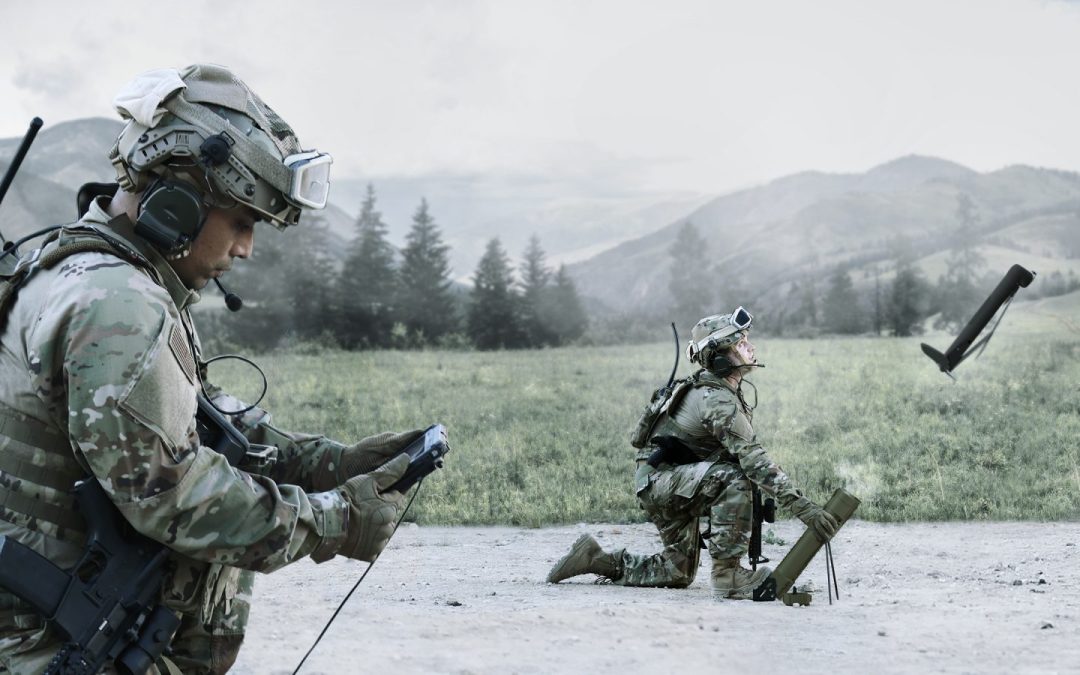by Ian Coutts
“Reach out” is a phrase that says a lot about what it is that salespeople do and, it must be said, gunners. In a few years, Canadian gunners may be able to reach out that little bit farther.
“Long-range precision fire systems” will allow the Royal Regiment of Canadian Artillery to do just that. It’s not the most specific phrase, and mentally it doesn’t conjure up much. But as Lieutenant-Colonel John Zwicewicz, the section head at the Directorate of Land Requirements looking into their potential acquisition, explains, it’s not so much a particular weapon as a capability.
“When we speak of long-range, and this is consistent with how NATO interprets these capabilities, that means we’re looking at ranges of 80 kilometres and beyond,” he said.
Two types of weapons have that capability, Zwicewicz says. One is rocket artillery; the other is long-range loitering munitions.
To the uninitiated, loitering munitions are similar to drones. But there is an important distinction. Take the General Atomics MQ-1 Predator, for example, probably one of the best-known military uncrewed aerial systems. It is remotely operated like a loitering munition but really has more in common with a conventional aircraft. It can deliver bombs or rockets or serve as a surveillance platform, but returns to base afterwards, like a plane.
First and foremost, says Zwicewicz, loitering munitions “are intended to be one way.” Like a drone, they are remotely piloted guided sensors that give the operator situational awareness. But they contain a warhead and deliver their payload by striking it. They have been used to great effect by the Ukrainian Armed Forces in the fight against Russia, scoring successes even with improvised versions created using commercially available drone technology.
Both long-range systems have their pros and cons.
With loitering munitions, the command-and-control link lets the operator “send the [system] to an area, search out a target, confirm it with pinpoint accuracy, and then engage it if a decision is made to do so,” Zwicewicz explained. “Or the commander can make the decision to terminate the mission and cause it to crash or detonate in a safe area.”
The loitering munition could also serve as an “intelligence, surveillance, and reconnaissance asset while they’re airborne,” sending back real-time information about the battlespace. But “that communications link is vulnerable to being detected, and to potentially being jammed,” he said, “and that might make it hard to deliver a guaranteed effect.”
The relatively slow speed of loitering munitions also makes them “easier to engage with an air defence asset and to detect on a radar.”

U.S. Army training on the M142 HIMARS at the Joint Pacific Multinational Readiness Centre in Hawaii in 2022. Photo: Pte Mariah Agular
That’s not as much of a problem for rocket artillery. “Those rockets are flying at Mach 2.5, Mach 3, etc.,” said Zwicewicz. Were the Army to go with rocket artillery, “you would have a highly responsive platform that can deliver effects within just a couple of minutes, one that has very good effects on target.”
And, more so than remotely operated loitering munitions, rockets are all-weather. Unlike loitering munitions, however, “those missiles are going to a pre-determined target,” he noted. Once a round is launched, it is on its own.
“There are technologies being developed by industry and allies to eventually have a rocket artillery system that can seek and engage an imprecisely located target,” said Zwicewicz. “But that’s not yet fielded.”
To be sure, it’s early days, and the project is only in the options analysis stage of the procurement process, but it’s possible that the Army will require both rocket artillery and loitering munitions systems, he said.
The purchase of a long-range precision fire system would not mean the end of conventional cannon artillery in the Army, Zwicewicz emphasized. “This capability would definitely augment and not replace that. Cannon artillery, 155 millimetre, I think will always continue to play a vital role for direct support for troops in contact.”
While the acquisition of a system is years away — the Army only identified the need for such a capability in December 2022 and initiated work on the project in January 2023 — there are a number of systems currently fielded that they are looking at, he said.
In terms of rocket artillery, there are the Lockheed Martin High Mobility Artillery Rocket System (HIMARS), currently in use by the U.S. Army and a number of NATO allies, the Hanwha K239 Chunmoo multiple launch rocket system, and Elbit System’s Precision and Universal Launch System (PULS). Possible choices for a loitering munition include Rheinmetall’s HERO series, Israel Aerospace Industries’ Harpy and Harop, and AeroVironment’s Switchblade family.
Given the demand for long-range precision fires, there will undoubtedly be many more systems available in the not-too-distant future for consideration.




